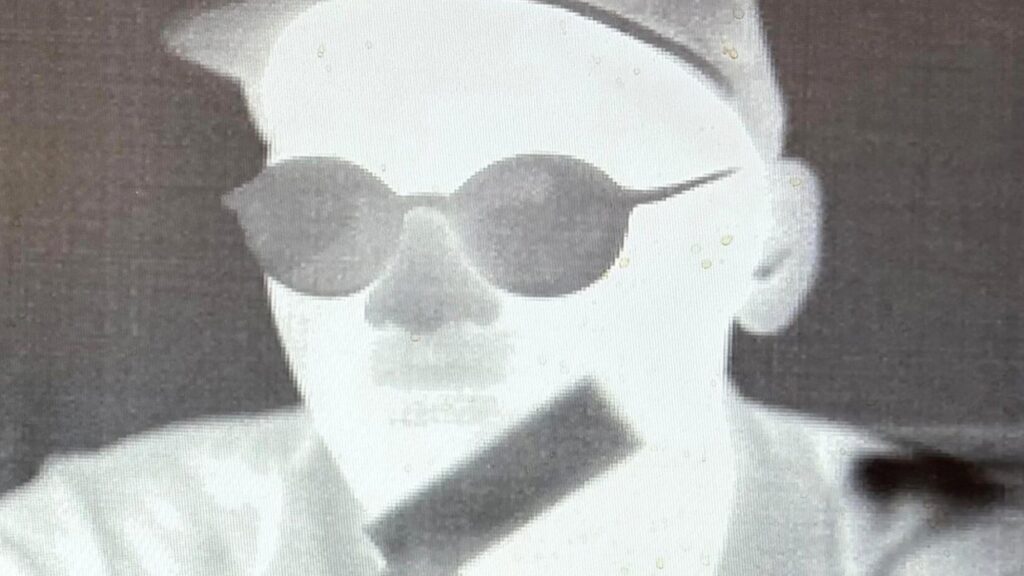Scientists have created eco-friendly “quantum inks” that can replace toxic metals in infrared detectors. The breakthrough could make night vision faster, cleaner, and more accessible to a wider range of industries.
Toxic Metals vs. Infrared Innovation
Manufacturers of infrared cameras are facing a growing challenge. Many of the materials used in today’s detectors, including toxic heavy metals, are now restricted under environmental regulations. As a result, companies often find themselves forced to choose between maintaining performance or meeting compliance standards.
These tightening rules have slowed the spread of infrared technology in civilian markets, even as interest rises in areas such as self-driving vehicles, medical imaging, and national security.
A team from NYU Tandon School of Engineering has introduced a promising alternative in a study published in ACS Applied Materials & Interfaces. Their approach replaces mercury, lead, and other restricted substances with environmentally friendly quantum dots that can detect infrared light without relying on hazardous materials.
A Quantum Dot Alternative
Instead of the traditional, slow, and costly fabrication methods that require atoms to be placed with extreme precision across detector pixels (similar to carefully assembling a puzzle under a microscope), the researchers turned to colloidal quantum dots.
These quantum dots are created entirely in liquid form, like mixing an ink, and then applied using scalable coating techniques already common in industries such as packaging and newspaper printing. Moving from atom-by-atom construction to this solution-based process could slash production costs and make large-scale commercial use of infrared detectors far more feasible.
Industry Bottlenecks and Breakthroughs
“The industry is facing a perfect storm where environmental regulations are tightening just as demand for infrared imaging is exploding,” said Ayaskanta Sahu, associate professor in the Department of Chemical and Biomolecular Engineering (CBE) at NYU Tandon and the study’s senior author. “This creates real bottlenecks for companies trying to scale up production of thermal imaging systems.”
Another challenge the researchers addressed was making the quantum dot ink conductive enough to relay signals from incoming light. They achieved this using a technique called solution-phase ligand exchange, which tailors the quantum dot surface chemistry to enhance performance in electronic devices. Unlike traditional fabrication methods that often leave cracked or uneven films, this solution-based process yields smooth, uniform coatings in a single step – ideal for scalable manufacturing.
Blazing-Fast Response and Sensitivity
The resulting devices show remarkable performance: they respond to infrared light on the microsecond timescale – for comparison, the human eye blinks at speeds hundreds of times slower – and they can detect signals as faint as a nanowatt of light.
“What excites me is that we can take a material long considered too difficult for real devices and engineer it to be more competitive,” said graduate researcher Shlok J. Paul, lead author on the study. “With more time this material has the potential to shine deeper in the infrared spectrum where few materials exist for such tasks.”
Transparent Electrodes: The Missing Piece
This work adds to earlier research by the same lead researchers who developed new transparent electrodes using silver nanowires. Those electrodes remain highly transparent to infrared light while efficiently collecting electrical signals, addressing one component of the infrared camera system.
Combined with their earlier transparent electrode work, these developments address both major components of infrared imaging systems. The quantum dots provide environmentally compliant sensing capability, while the transparent electrodes handle signal collection and processing.
Toward Large-Scale Infrared Arrays
This combination addresses challenges in large-area infrared imaging arrays, which require high-performance detection across wide areas and signal readout from millions of individual detector pixels. The transparent electrodes allow light to reach the quantum dot detectors while providing electrical pathways for signal extraction.
“Every infrared camera in a Tesla or smartphone needs detectors that meet environmental standards while remaining cost-effective,” Sahu said. “Our approach could help make these technologies much more accessible.”
The performance still falls short of the best heavy-metal-based detectors in some measurements. However, the researchers expect continued advances in quantum dot synthesis and device engineering could reduce this gap.
Reference: “Heavy Metal Free Ag2Se Quantum Dot Inks for Near to Short-Wave Infrared Detection” by Shlok J. Paul, Letian Li, Zheng Li, Thomas Kywe, Ana Vataj and Ayaskanta Sahu, 11 September 2025, ACS Applied Materials & Interfaces.
DOI: 10.1021/acsami.5c12011
In addition to Sahu and Paul, the paper’s authors are Letian Li, Zheng Li, Thomas Kywe, and Ana Vataj, all from NYU Tandon CBE. The work was supported by the Office of Naval Research and the Defense Advanced Research Projects Agency.
Never miss a breakthrough: Join the SciTechDaily newsletter.
Follow us on Google, Discover, and News.

